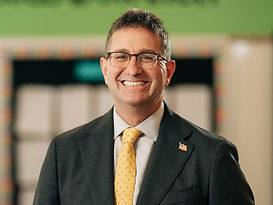GUEST COLUMN.
THE HEADACHE OF GRANTS ADMINISTRATION: AND A PROPOSED ASPIRIN
By Nancy Augustine, Director, Center for Intergovernmental Partnerships, National Academy of Public Administration

In the 21st century, no significant public problem is the sole province of one government agency or even one level of government. William Eggers and Don Kettl talk about this challenge extensively in their recent book, Bridgebuilders: How Government Can Transcend Boundaries to Solve Big Problems. Effective problem-solving requires federal, state, and local governments to work together, often with partners in the private and nonprofit sectors.Effective problem-solving requires federal, state, and local governments to work together, often with partners in the private and nonprofit sectors.
Despite the necessity of intergovernmental collaboration, state and local officials often don’t understand the nuances of how federal agencies work, and many federal officials don’t understand the complexity and variations in how state and local government functions. As a result, program design doesn’t always adequately address the hand-off between levels of government, and well-intentioned federal programs might not play out the way officials hoped.
With that in mind, building collaborative capabilities to develop and implement effective policies and programs across levels of government and sectors of society is a significant challenge to all concerned. But it doesn’t have to be.
We can do better.
One specific area that’s long been in need of improvement is grants administration. This is a topic that the U.S. Government Accountability Office (GAO) takes on frequently, looking at programs within and across agencies. As noted in its 2018 study, grants management requirements can be “duplicative, unnecessarily burdensome, and conflicting.”
The questions that come up can be numbingly complicated and are arduous and time consuming for cities of all sizes. Untold hours can be spent on the effort to find the grants, learn about them, determine eligibility, compile documents, apply, and then wait. Because many programs serve a narrow band of services, the “customer” may have to repeat this entire process more than once, attempting to prove the needs they have repeatedly.
The questions are also seemingly endless. Imagine a scenario where managers want to address run-down housing and periodic flooding in a specific neighborhood. How do they identify the best options for grants? Which U.S. Department of Housing and Urban Development grant is the best fit? Or does their city qualify for the U.S. Department of Agriculture rural housing program? Would it be eligible for flood mitigation funds through the Federal Emergency Management Agency (FEMA)? Or perhaps because the streets flood, is it a transportation issue?
Well-resourced communities might have the capacity to find and navigate the options. Or they might hire a consultant.
But while larger entities have the luxury of buying capacity, smaller ones don’t, which makes the problem of navigating this kind of grant application process exceptionally difficult.
In 2021, President Biden signed an Executive Order on Transforming Federal Customer Experience and Service Delivery to Rebuild Trust in Government. This action promised to tackle the transaction costs associated with accessing government benefits and services. The Executive Order goes so far as to define the customer to include state, local, and tribal entities.
Yet the 36 customer experience improvement commitments across 17 federal agencies focus almost exclusively on individuals, families, and small businesses. One exception is a promised action to consolidate grants applications for tribal communities. Unquestionably, these improvements are much needed and vitally important. But what about recognizing that state and local governments are customers, too?
Last year, we at the National Academy of Public Administration wrote about one of the needs identified in the Executive Order to streamline access to public benefits programs designed by the federal government and implemented at the state and local levels. It’s a complex situation, with many federal programs serving the same populations but requiring different documentation on varying timeframes.
Subsequent to that work, we at NAPA began to recognize that these innovations could be adapted by federal agencies administering grants targeted to underserved communities. A direct certification approach would automatically qualify communities for grants based on their participation in (and eligibility for) other government programs. For example, grantees serving communities eligible for the U.S. Department of Agriculture’s 2501 Program or the U.S. Department of Transportation’s Areas of Persistent Poverty program could be deemed eligible for FEMA’s Safeguarding Tomorrow Revolving Loan Fund.
Cross-eligibility determinations would establish baseline eligibility for multiple programs at the same time. The Climate and Economic Justice Screening Tool is a step in this direction. Here’s how it works: The Council on Environmental Quality combined datasets to identify communities defined as overburdened and underserved in terms of climate change, energy, health, housing, legacy pollution, transportation, water and wastewater, and workforce development. The tool dovetails with the Justice40 Initiative, which directs federal agencies to ensure that 40 percent of overall investments go to disadvantaged communities.
Modern challenges inevitably stretch across all levels of government. In starting to address grant accessibility, we can take our first steps toward tackling larger issues and serving the people who need responsive government the most.
The contents of this guest column are those of the author and not necessarily those of Barrett and Greene, Inc.
#StateandLocalGrantsManagement #GrantManagement #StateandLocalGovernmentManagement #IntergovernmentalRelations #CrossEligibilityDeterminatinos #NationalAcademyofPublicAdministration #NAPA #CenterforIntergovernmenalPartnerships #IntergovernmentalCollaboration #GrantsAdministration #PresidentialExecutiveOrder #StreamliningAccesstoPublicBenefits #DirectCertification #ImprovingGrantAccessibility #GrantAccessibility #NancyAugustine



































































































